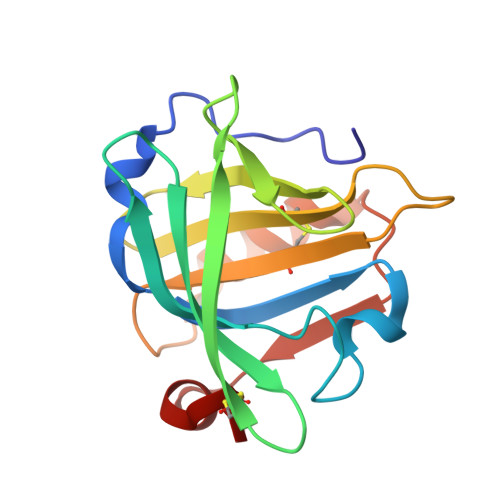Thermodynamic, crystallographic and computational studies of non-mammalian fatty acid binding to bovine beta-Lactoglobulin.
Rovoli, M., Thireou, T., Choiset, Y., Haertle, T., Sawyer, L., Eliopoulos, E., Kontopidis, G.(2018) Int J Biol Macromol 118: 296-303
- PubMed: 29879410
- DOI: https://doi.org/10.1016/j.ijbiomac.2018.05.226
- Primary Citation of Related Structures:
6GE7, 6GF9, 6GFS, 6GHH - PubMed Abstract:
The milk protein β-lactoglobulin has been widely studied since its discovery, both as a purified protein and in mixtures with other milk proteins, where its effect on the processing properties is of importance to the dairy industry. The protein can bind a variety of small hydrophobic molecules, which may allow its use as an oral delivery vehicle. In the present study we have examined the binding of odd-numbered fatty acids by isothermal calorimetry (ITC), X-ray crystallography and computer modelling to provide a clearer picture of the extent and variability of the central binding pocket. The Kd values for the fatty acids C13, C15, C16, C17 and C19 as determined by ITC are 1.93, 2.91, 3.05, 4.11 and 8.67 × 10 -7 M, respectively. The molecular structures revealed the ligands bound in the central cavity with generally well ordered lipophilic tails but significant positional variation at the carboxyl group end. In silico docking analyses identified the lipophilic interactions within the central cavity as the main driving force for binding with electrostatic interactions and H-bonds playing a minor role.
Organizational Affiliation:
Department of Biochemistry, Veterinary Faculty, University of Thessaly, Greece.
















